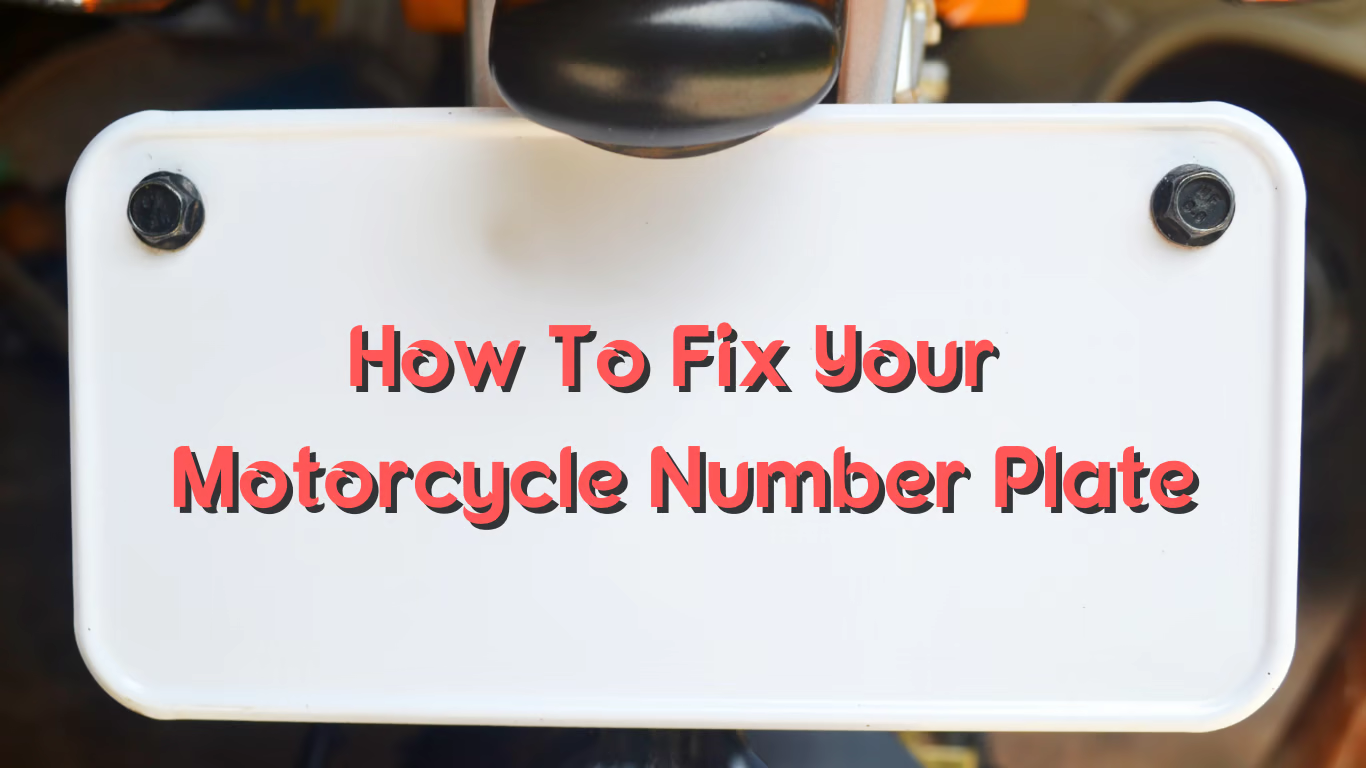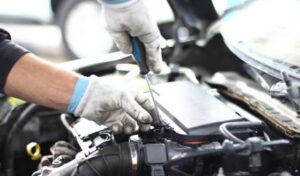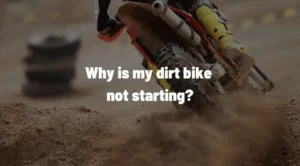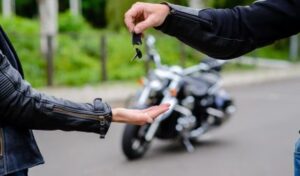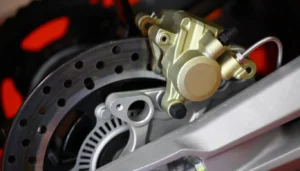When you have a trip planned and then discover that your motorcycle won’t start, your mind goes blank. Even if you are an experienced rider, it may take some time to figure out what the problem is, but for a novice, it may present a significant challenge.
It has the potential to ruin both your holiday and your trip.
As a result of my experience with this problem on a number of occasions, I have identified fifteen different reasons why a motorcycle will not start.
If you are also experiencing this problem, then you should not disregard this post because I have also explained how to fix it.
Why Is My Motorcycle Not Starting?
The most common cause of a motorcycle’s difficulty starting is the battery’s inability to generate adequate electricity. Other possible causes include a clogged carburetor, the arrival of winter, dirty injectors, a bad starter, damaged ignition oil, damaged spark plugs, broken spark plug wires, a frozen engine, bad gearing, and wrongly set timing.
The possible causes of a motorcycle’s inability to start are described below.
Weak/dead Battery
The starting motor, which fires the motorbike, won’t turn on if the battery is weak or dead. If the battery is the issue, replacing the outdated battery with a new one is the only practical fix.
How can I tell if the battery on my motorcycle is weak?
An easy visual examination will reveal the most glaring warning indicators. Broken terminals, a bulge or crack in the plastic casing, any fluid leaks, and discoloration are all indicators of a bad battery. Battery terminals may corrode from time to time.
How can a motorbike battery be revived?
Have jumper cables on hand, first. Connect the positive clip (red wire) to the dead battery’s positive battery terminal.
Connect the other positive clip to the functional battery’s positive terminal.
Connect the negative clip (black wire) to the functional battery’s negative terminal.
Damaged Spark Plugs
Bad motorcycle spark plugs can cause your bike to misfire, backfire, or have an engine that floods often.
Physical indications on the spark plugs themselves, such as burn marks, broken tips, rust, and corrosion, can also be looked for.
Technically, you can clean spark plugs, but it’s usually not worth the effort. Because of a variety of factors, we do not advise it. At the end of the day, a cleaned plug won’t perform as well as a new plug. Sharp edges are where electricity discharges the best.
How is a damaged spark plug cleaned?
Move the piston to BDC before removing the plug, and even if you have to wait for cool-down, make sure the engine is completely cold.
Then liberally apply penetrating oil on the fractured plug shell. After giving it some time to work, firmly press an easy out of the proper size into the empty shell.
Damaged Ignition Coil
To lay the foundation, use the red-tipped multimeter to make contact with the primary wire connector of the coil and to check for continuity between ground and the primary side of the coil.
Connect the test light probe to the coil’s positive (+) terminal. When the ignition is “on,” the lamp must be illuminated at the coil’s positive terminal.
If the lamp does not light up, use the probe to make contact with the coil’s terminal negative (-).
The following are the primary causes: Spark plugs or spark plug wires that have been damaged: A damaged spark plug or spark plug wire that has too much resistance will raise the coil’s output voltage, which can lead to misfires and starting issues.
Can you fix an ignition coil?
Although coils can be refurbished, repaired, or replaced, the cost of providing a new unit must be considered.
Starter Issue
You can utilise another bike on its centre stand with its back wheel pressed against the bike with the bum starter’s back wheel.
To “thump start” a dead motorbike, open the throttle to simultaneously spin the back wheels. After starting the motorbike, rapidly shift into neutral.
Why won’t my motorcycle’s engine crank over?
Nearly dead battery – A battery issue is frequently to blame if the starting motor is only rotating slowly.
If there is time, we can charge the battery or bump start the engine using jump leads, depending on the bike. A dead battery might not accept a charge and will need to be replaced.
Are starters repairable?
While some broken starting parts are easy to fix, others need several parts and labour-intensive procedures.
It can be more economical to completely replace your starter if you’re performing a major rebuild. This will save you time whether working with a professional mechanic or changing your starter.
How to Start a Non-Starting Motorcycle (But the Battery is Good)
- Verify the Tank is Filled with Gas.
- Turn on the clutch.
- Set (the Right) Gear on the Motorcycle.
- Check for unsecured wires.
- Verify that the kill switch is not on.
- Make sure the fuel valve is turned “on.”
- Check the functionality of the fuel injection system.
Dirty Carburetor
Before cleaning the carburetor, make sure it is cold to the touch.
- Cleaner diluted.
- filter for clear air.
- Carburetor removal
- Eliminate the carburetor float.
- Remove any other detachable parts.
- Wash and soak the parts.
- Dry after rinsing.
- Replace and reassemble.
Damaged plunger switch
If your motorcycle won’t start, it’s usually as easy as checking to see if the fuel control valve is clogged with rust or if corrosion hasn’t built up inside the valve itself, causing dry rot, cracking, or leakage.
When the side stand is engaged, the kickstand switch opens the starter relay circuit, preventing the relay from starting the motorcycle. This prevents the bike from taking off with the kickstand still engaged. The kickstand switch is a safety sensor that signals the ECU to kill the motorcycle as soon as it is put in gear.
Consult your motorcycle’s owner’s handbook to find out if it has a kickstand switch.
The bike’s many electrical sensors should be listed in the owner’s handbook; if your bike dies when you put it in gear but only when the kickstand is down, it’s probably a kickstand switch.
Guidelines for Safe Use
Use a switch with a direct opening mechanism, use NC contacts with a forced release mechanism, and configure the switch so that it will operate in direct opening mode if it is going to be used as a switch in an emergency stop circuit or in a safety circuit to prevent accidents that result in injuries or fatalities.
Use one-way rotational screws or other equivalent hardware to securely fasten the Switch during installation in order to avoid accidental removal.
Clogged exhaust pipe
How should an exhaust pipe be cleaned on the inside?
- Utilise a caustic soda and water mixture inside the Escape. To carry them out, you must safeguard your hands and face.
- Pressurize after inserting a hose into the tube.
- polish the outside of the metal.
- At least twice a year, repeat the process.
How can I clear a clogged exhaust pipe?
Clean the exhaust tip with a cloth, and then use a hard-bristled brush to reach as far into the tail pipe as you are able to clean within the exhaust. Rust and carbon deposits can be broken up by using a degreaser. Apply a degreaser to the exhaust’s exterior and interior using a dry cloth.
Empty fuel tank
Additionally, the carburetor lacks any quick-moving devices for supplying gasoline to the engine. Neither the fuel system nor the carburetor will be harmed by running out of fuel. On a carbureted bike, however, running out of gasoline can have a more detrimental effect on the engine than the fuel delivery system.
Of course, the fuel tank’s primary purpose is to store fuel. It also serves as a crucial point of contact between the rider and the bike by giving the knees a safe place to grab when riding.
Electrical issues
Having troublesome ground wires is one of the most prevalent electrical problems with bikes. Electrical parts flashing in and out and a bike not starting are signs that your ground cables are beginning to fail.
How are electrical issues on a motorbike troubleshooted?
- Check the voltage of the battery before starting.
- Check the button’s voltage.
- Verify that the button responds appropriately when pressed.
- Check the connection between the starting relay and the button.
- Check the starter relay’s ground.
Engine cutoff switch
When the operator is removed from the helm, a safety feature called an engine cut-off switch turns off the propulsion equipment.
Does activating the engine cutoff switch repeatedly damage the motorcycle, as someone recently asked on Quora?
Not in any way that I’m aware of.
The kill switch, also known as a cutoff switch, used to do the same thing as the key switch: ground out the coil to prevent spark from occurring in the spark plugs. Not just for motorcycle engines, but for just about every engine as well. The two switches were connected in series with one another on various devices. Someone said,
Blown Fuse
On a motorbike, a malfunctioning electrical component in the same circuit as the fuse in issue is the major indicator of a blown fuse. A motorbike that won’t start is the first sign that its primary fuse has blown. Your motorcycle’s related electric circuitry won’t function if the fuse is blown.
How do you handle a blown fuse?
- Unplug all electronics, appliances, and other objects from the socket in the room where the fuse blew in order to safely fix it.
- By turning off the main power, the fuse box’s electricity will no longer be connected.
- Restore electricity to the fuse box after replacing the fuse.
Fuel injection issue
The most common cause of fuel injector failure is a buildup of impurities like carbon. An injector that has accumulated carbon might become partially or completely blocked, which prevents the injector from shutting all the way. This causes a misfire by causing a drip.
How is a fuel injector issue fixed?
Removing the injectors from the engine is the only surefire approach to successfully clear an injector that has become blocked. Once removed, the injectors can be delivered in person or sent via mail to an expert injector cleaning service like Injector RX.
Damaged vacuum line
Once the engine is running, listen for a hissing sound.
Vacuum leaks in cars can start a hissing sound when they happen. The likelihood that you will hear it when you open the hood of the car while the engine is running is higher than if you can hear it from within the vehicle.
By operating at a low air-fuel ratio while driving, a vacuum leak raises engine compartment temperatures. Over time, this combination can harm bearings and pistons, as well as spread to other engine components like the catalytic converter.
Clogged Muffler
What signs indicate a blocked exhaust system?
- Symptoms of a Failing or Damaged Muffler or Exhaust
- Engine/exhaust noise that is too loud.
- decreased fuel efficiency
- Slowing down the pace.
- Strong Gases Stench
- Knocking or Banging Noise Under the Vehicle.
- Rust Is A Result Of Condensation
- Engine is making noises.
- From the engine bay, a burning odour is emitting.
The damaged component might prevent your automobile from effectively sucking exhaust fumes out of your engine, which will have a detrimental impact on the performance of your car’s engine.
Your automobile will thus emit more pollutants and use more petrol. Your automobile will suffer additional harm the longer this continues.
Why Will My Motorcycle Crank But Not Start?
Your problem is likely the battery if the starting motor sounds like it’s rolling over as usual.
The engine may be having difficulties receiving gasoline, developing compression, or producing a spark if it cranks but won’t start.
How Do You Force Start A Motorcycle?
How to roll, push, and clutch start a motorbike
- Verify frequent mistakes.
- Set up the bike so it can move.
- Shift the bike into the second or third gear.
- Engage the clutch while pressing.
- Release the clutch when you start moving.
- Rev and ride is step six.
How Do I Manually Start My Bike?
The simplest method is to shift into drive, elevate the back wheel, and manually “bump” the wheel.
Otherwise, you must remove an engine cover so that the end of the crankshaft is visible, and you must then spin the crank directly using a socket or wrench.
Do You Have To Hold The Clutch When Starting A Motorcycle?
Yes, if it lacks a built-in clutch safety switch. Older motorcycles can be started in neutral, but they will also attempt to start in gear, which can tip the bike over.
A safety interlock on more recent motorcycles prevents starting until the clutch is disengaged and the lever is pushed in.
Why Is My Motorcycle Won’t Start After Sitting For A Year?
This is due to the fact that over time, gasoline just degrades. The chemical bonds in gasoline deteriorate as it sits in the tank and fuel system over time.
Additionally, moisture accumulation in the fuel can lead to a variety of issues. Make sure you have gasoline by checking that tank and opening it up!
Why Is My Motorcycle Not Starting But Giving Clicking Sound
When you try to start a motorcycle, there are three basic causes for the clicking sound.
A dead battery is the primary and most frequent source of the issue. A poor beginning can be the second cause.
A seized engine is the third most frequent, but less likely, cause of the motorbike clicking.
Conclusion
When they discover that their motorcycle will not start, many people who ride motorcycles become frustrated. You will be unable to find a solution to the issue if you do not first determine what the primary cause of the issue is.
This is because there are multiple potential causes for this, each of which can be challenging to identify.
I have also detailed the solution to these problems in the previous section. If you read and apply the advice in this article, you should have no trouble solving the problem that you are having.
Happy riding!
Sources:
13 Reasons Why Your Motorcycle Won’t Start And How To Fix It
https://www.midlandmufflerbrakes.com/5-reasons-why-you-shouldn-t-drive-with-a-damaged-muffler
https://www.ia.omron.com/product/cautions/30/safety_precautions.html
https://axleaddict.com/auto-repair/How-to-Find-and-Fix-a-Vacuum-Leak
Why Do Motorcycle Fuses Blow?

